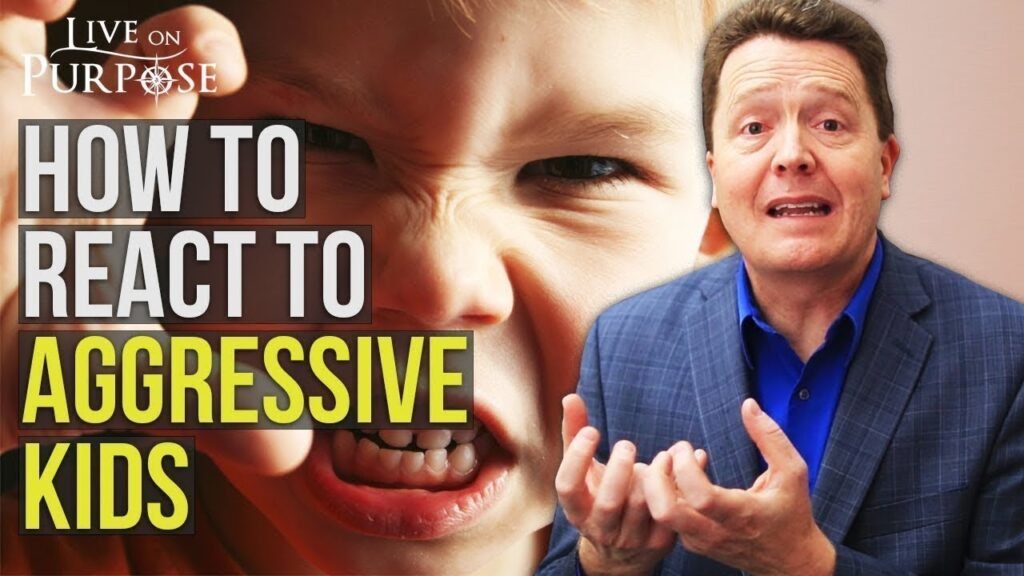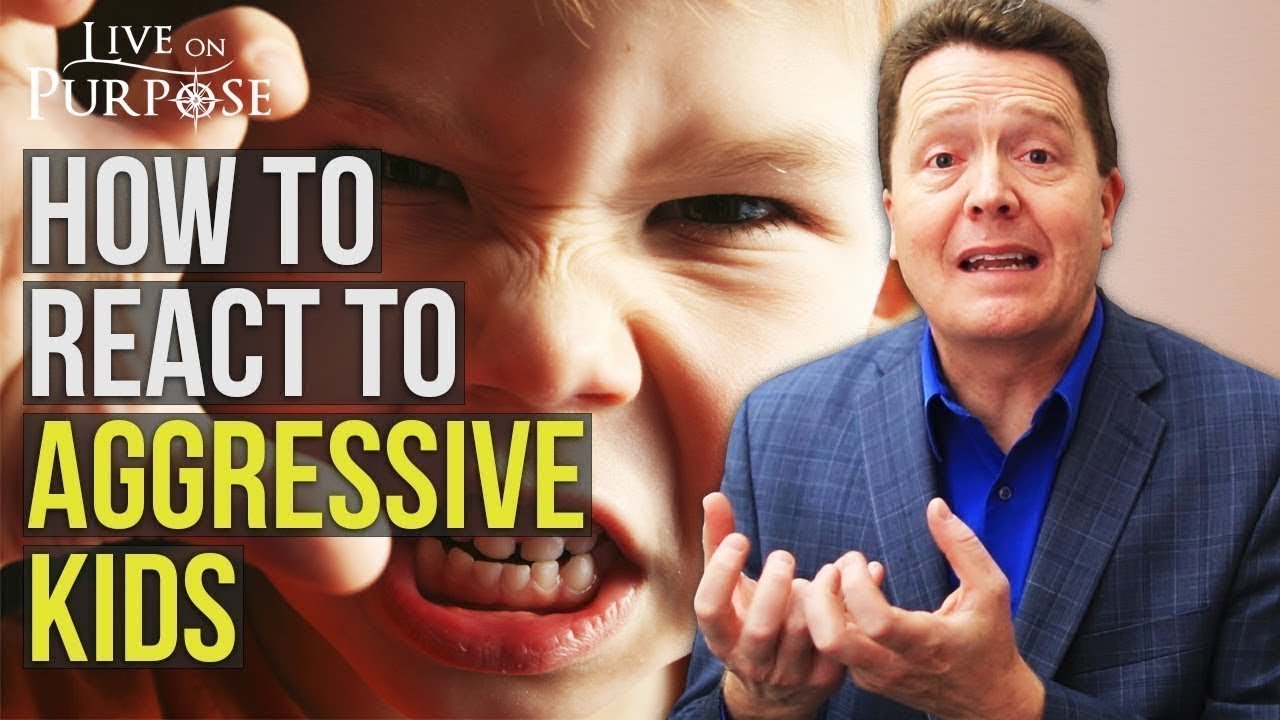“Normalizing Anger in Children as They Navigate Developmental Stages” is an article that explores the common experience of anger in children and offers practical tips for managing it. It acknowledges that children go through different developmental stages that can lead to frustration and anger. By normalizing the experience of anger, the article aims to provide parents and caregivers with the necessary tools to help their child navigate these emotions. The five tips for managing a child’s anger include modeling appropriate behavior, remaining calm during tantrums, establishing effective communication, providing alternatives to aggressive outlets, and seeking professional help when needed.
The article begins with a video by Live On Purpose TV, where Dr. Paul Jenkins discusses the topic of managing anger in children. Dr. Jenkins emphasizes the normalcy of experiencing anger as children go through different developmental stages. He highlights the importance of teaching children to identify and communicate their emotions effectively. The article further expands on this idea by providing tips for parents and caregivers on how to model appropriate behavior, remain calm during tantrums, establish communication, provide alternative outlets for anger, and seek help when necessary. Through these practical suggestions, the article aims to aid parents in navigating their child’s anger management issues in a positive and effective manner.
Understanding Anger in Children
Developmental Stages and Emotions:
Children go through various developmental stages, and during each stage, they may experience frustration and anger. It is essential to recognize that these feelings are a normal part of their development and growth. As children navigate these stages, they may encounter new tasks and challenges, leading to frustration and potential feelings of anger.
Anger as a Normal Part of Development:
Anger is a natural and healthy emotion for children to experience. It is crucial to normalize anger as a valid emotional response and help children understand that feeling angry is not wrong or bad. As they grow, they will encounter situations that may elicit anger, and learning to manage this emotion is a vital life skill.
Anger as a Secondary Emotion:
Anger is often a secondary emotion, meaning that there are underlying emotions that come before it. Common preceding emotions include frustration, sadness, disappointment, or feelings of loss. By helping children identify and express these primary emotions, they can develop a better understanding of their anger and find healthier ways to cope with it.
Importance of Teaching Emotion Identification and Communication
Benefits of Emotional Awareness:
Teaching children to identify and be aware of their emotions provides several benefits. It helps with self-regulation, allowing them to recognize and control their feelings effectively. Emotional awareness also enhances their emotional intelligence, supporting healthy relationships and communication. By understanding their emotions, children can develop healthy coping mechanisms and navigate challenging situations more effectively.
Effective Communication Skills:
Effective communication is key to managing and expressing anger appropriately. Teaching children to label their emotions and express themselves openly and honestly fosters healthy communication habits. Encouraging active listening and empathy helps children understand others’ perspectives and promotes healthy conflict resolution.
Creating a Safe Environment for Expression:
Providing a safe and supportive environment for children to express their emotions is crucial. Avoiding judgment and punishment allows children to feel comfortable expressing their anger and other emotions. Foster an atmosphere of understanding and support, where children feel validated and heard.
Tips for Managing a Child’s Anger
Modeling Appropriate Behavior:
As parents or caregivers, it is vital to role model appropriate behavior when it comes to anger management. Children learn by observing and imitating those around them. Remaining calm and composed during challenging situations can teach children alternative ways to handle their anger.
Remaining Calm during Tantrums:
When a child is experiencing a tantrum or intense anger, it is essential for adults to remain calm and composed. Reacting with anger or frustration may escalate the situation further. By staying calm, parents can help the child regulate their emotions and work towards a resolution.
Establishing Open Communication:
Establishing open lines of communication with children allows them to express their emotions freely. Encourage children to talk about their feelings and validate their experiences. This helps build trust and creates an environment where children can seek support when they are feeling angry or upset.
Providing Alternatives to Aggressive Outlets:
Instead of encouraging physical aggression, provide children with alternative outlets for their anger. Teach them healthy coping strategies such as deep breathing exercises, using words to express their emotions, or engaging in calming activities like drawing or listening to music.
Knowing When to Seek Help:
If a child’s anger becomes persistently intense, interferes with daily functioning, or poses a risk to themselves or others, it may be necessary to seek professional help. Consulting with a psychologist, child development specialist, or counselor can provide additional guidance and support for both the child and their caregivers.

Developmental Stages and Emotions
Infancy and Early Childhood:
During infancy and early childhood, children are learning to navigate the world around them. Frustration and anger may arise when they struggle with new skills such as walking or talking. It is crucial to provide patience and support during these stages, helping them develop healthy coping mechanisms.
Preschool and Early School Years:
In preschool and early school years, children are expanding their social interactions and facing new challenges. Friendships, sharing, and academic expectations can lead to frustration and anger. Teaching them healthy communication skills and providing guidance can help them manage these emotions.
Adolescence and Teenage Years:
As children enter adolescence and their teenage years, they may experience increased emotional intensity. Hormonal changes, peer pressure, and identity exploration can contribute to anger and mood swings. Creating a safe space for them to express their feelings and seeking professional help if necessary is crucial during this developmental stage.
Anger as a Normal Part of Development
Understanding the Purpose of Anger:
Anger serves a purpose and can motivate individuals to take action or protect themselves. It is important to help children understand that anger is a healthy and normal response to certain situations. By recognizing the purpose of their anger, they can learn to manage it effectively.
Normalizing Anger as a Healthy Emotion:
Normalizing anger helps children understand that experiencing this emotion does not make them bad or wrong. By validating their feelings and providing appropriate guidance, children can learn to navigate their anger in a way that promotes their emotional well-being and supports healthy relationships.
Differentiating between Healthy and Unhealthy Expressions of Anger:
While anger is a natural emotion, it is crucial to teach children the difference between healthy and unhealthy expressions of anger. Healthy expressions involve assertive communication, problem-solving, and coping strategies. Unhealthy expressions may include aggression, violence, or harmful behavior. Teaching children alternative ways to manage their anger contributes to their overall emotional development.
Anger as a Secondary Emotion
Identifying Underlying Emotions:
Helping children identify the underlying emotions that precede anger is essential for managing their anger effectively. Frustration, sadness, disappointment, or feeling loss are common emotions that can trigger anger. By recognizing these primary emotions, children can develop strategies to address them directly.
Common Triggers for Anger:
Certain situations or events can trigger anger in children. These triggers may vary from child to child but can include perceived injustice, unmet expectations, feeling ignored, or a sense of powerlessness. Identifying these triggers helps children anticipate and manage their anger proactively.
Helping Children Recognize and Express Primary Emotions:
Teaching children to recognize and express their primary emotions is crucial for anger management. By understanding and naming these emotions, children can communicate their needs and seek appropriate support. Encouraging open dialogue and providing a safe space for expression supports emotional growth.
Benefits of Emotional Awareness
Improved Self-Regulation:
Emotional awareness allows children to recognize and regulate their emotions effectively. By understanding their feelings, children can develop strategies to calm themselves down and make thoughtful choices instead of reacting impulsively.
Enhanced Emotional Intelligence:
Emotional intelligence refers to the ability to recognize and understand one’s emotions and the emotions of others. Teaching children emotional awareness enhances their emotional intelligence, enabling them to navigate relationships, resolve conflicts, and develop empathy towards others.
Healthy Coping Mechanisms:
By promoting emotional awareness, children can develop healthy coping mechanisms to manage their anger and other emotions. Instead of resorting to aggression or repression, they can explore alternative outlets such as journaling, engaging in hobbies, or seeking support from trusted individuals.
Effective Communication Skills
Teaching Children to Label Their Emotions:
Teaching children to label their emotions helps them develop a vocabulary for expressing their feelings. By using words to describe their anger, they can communicate their emotions more effectively and seek support when needed.
Encouraging Open and Honest Expression:
Creating an environment that encourages open and honest expression of emotions supports effective communication. By actively listening and validating children’s emotions without judgment, they will feel more comfortable expressing their anger and seeking resolution.
Active Listening and Empathy:
Practicing active listening and empathy allows children to feel heard and understood. By actively engaging in conversations and demonstrating empathy towards their experiences, adults can build trust and foster healthy communication habits.
Creating a Safe Environment for Expression
Avoiding Judgment and Punishment:
Judgment and punishment can inhibit children from expressing their anger and other emotions. Creating a safe environment means refraining from judgment and instead encouraging open dialogue and understanding. By focusing on the emotion and providing guidance, children can learn to manage their anger positively.
Encouraging a Supportive and Understanding Atmosphere:
Supporting children requires creating an atmosphere of support and understanding. By validating their emotions and experiences, children feel safe expressing their anger and seeking guidance when needed. Providing comfort and reassurance helps them navigate their emotions effectively.
Promoting Emotional Validation:
Emotional validation is essential for children to feel understood and supported. Validating their emotions helps them recognize that their feelings are valid and worthy of acknowledgment. By expressing understanding and empathy, adults can foster emotional growth and resilience.
Knowing When to Seek Help
Recognizing Persistent or Intense Anger:
If a child’s anger persists or intensifies to the point where it affects their daily functioning, relationships, or well-being, it may be necessary to seek professional help. Signs of concerning anger may include frequent tantrums, aggression towards others, or self-harm behaviors.
Seeking Professional Guidance:
Consulting with professionals such as psychologists, child development specialists, or counselors can provide valuable guidance and support. These professionals can assess the underlying causes of a child’s anger and provide strategies to manage it effectively.
Supporting Children with Anger Issues:
Children with more significant anger issues may require ongoing support and intervention. By seeking help early on, parents and caregivers can access resources and strategies to support their child’s emotional well-being. Continued support may include therapy, counseling, or specialized anger management programs.

